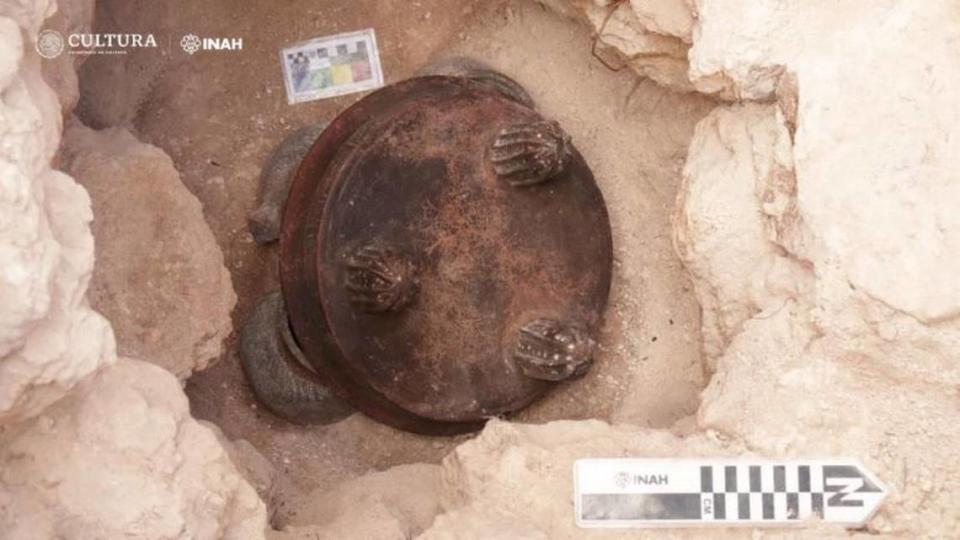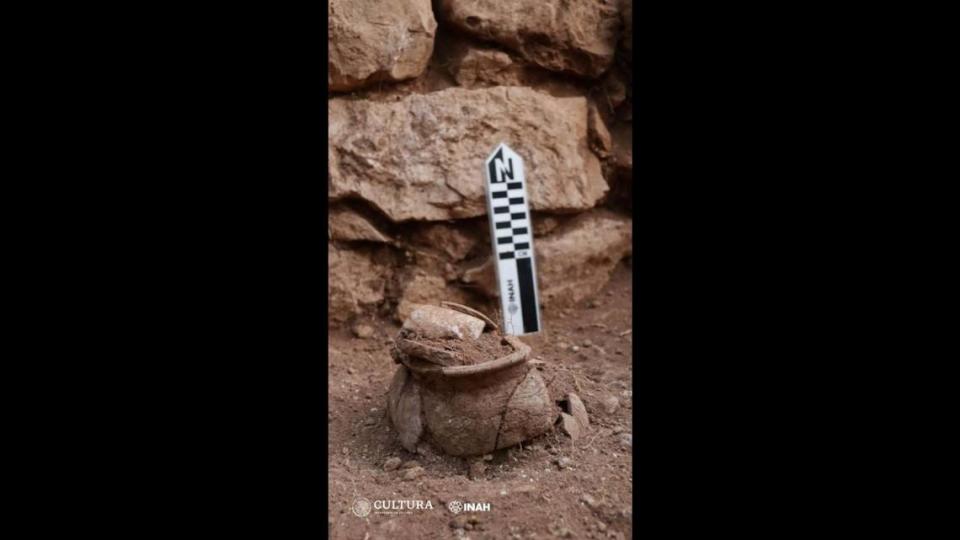1,100-year-old ceramics were ritualistic offerings to Mayan god and goddess, experts say
More than 1,000 years ago, the Mayan people settled in the Mexican city of Uxmal.
The sprawling city was home to some of the most important Mayan ceremonial sites, and it is remembered as one of the “high points of Mayan art and architecture,” according to UNESCO. At its peak, the city had about 25,000 inhabitants and was an important nexus for the exchange of goods and ideas.
Now, excavations of what was once a bustling civilization are giving archaeologists more insight into life in Uxmal, including knowledge of ritualistic practices.
Archaeologists recently discovered a collection of ceramic artifacts that were used as offerings to Mayan deities, Mexico’s National Institute of Anthropology and History announced on June 5. The ceramics were found in a structure at the El Palomar site during an excavation led by José Huchim Herrera.
Experts believe the artifacts, which include a tripod bowl and four vessels, were used as a ritualistic offering to the god and goddess of abundance, according to the institute.

The ceramics were configured in an arrangement that was likely meant to symbolize the four corners of the universe and the four cardinal directions, experts said. These corners were believed to hold a sacred liquid that was food for gods.
Among the four vessels was a fluted pot with a short neck that likely dates to the Late Classic Period — which lasted from 750 A.D. until 900 A.D., according to archaeologists. The remaining vessels date to the Muna group, which existed during the Terminal Classic period from 900 A.D. until 1100 A.D.

Experts said the tripod bowl still has traces of polychrome and was likely used as a container representative of the cosmos and harmony within the universe.
All of the goods were excavated and will undergo further testing to determine if there are any remaining traces of food or organic materials, the institute said.
Uxmal is about 240 miles southwest of Cancun.
Google Translate was used to translate a news release from Mexico’s National Institute of Anthropology and History.
Massive burial site tied to Mayan deity is uncovered — with some bodies headless
Trove of Mayan ceramics could give insight to life under ‘iconic’ ruler 1,400 years ago
What did people eat 9,000 years ago? Hunting cave reveals glimpses of diets in Mexico

 Yahoo Sports
Yahoo Sports